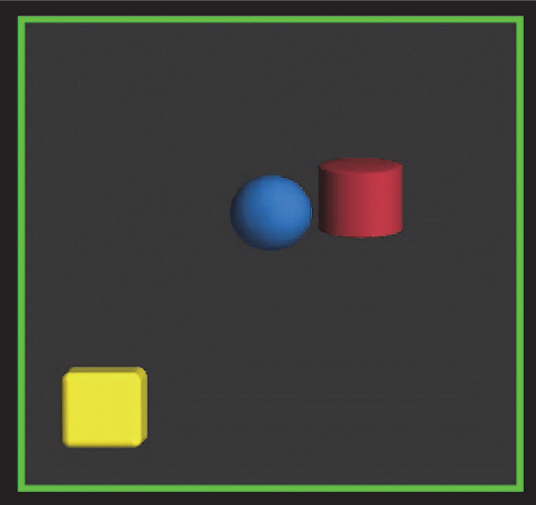 Sympathy is crucial for human co-existence. It's one of the factors why society is able to function, but we've never fully understood how it develops.
Sympathy is crucial for human co-existence. It's one of the factors why society is able to function, but we've never fully understood how it develops.
Newborns respond to others in distress through emotional contagion, which means that if they see someone smiling, they smile too and if they see someone crying, they start crying. Then around about 2 years old, toddlers start to comfort their friends if they see that something bad has happened to them. But we haven't really understood what happens between these milestones.
That question is what Yasuhiro Kanakogi and his team from Kyoto University in Japan have been working on and they published their work in PLoS ONE this week. The researchers made some animations of a blue ball and a yellow cube. During the animations one of the shapes was 'bad' and one of them was 'good'. The bad shape chased the other one around, hitting it and eventually, squashing it. They showed these clips to 40 children 10 month old children and then tested their reactions to the shapes afterwardsto see if they preferred the agresssor or the victim.
The researchers watched the subjects eye movement, but they didn't preferentially look at one shape over the other. However when offered a choice of the shapes after the video a significant majority preferentially chose the victim. To ensure that the children were not just scared of the agressive shape, the team then introduced a neutral shape (a red cylinder). Again, although there was no evidence of preferential looking, when offered a choice between the victim shape and the neutral shape, they chose the victim. And when asked to choose between the neutral shape and the aggressive shape, they chose the neutral shape.
Although more research will need to be done to examine how this effect fits into the long term development of sympathy, the task showed that from 10 months old, children understand the causality of an agressive event and without reacting to an emotional response (the shapes didn't appear upset, ruling out emotional contaigon) preferentially chose the victim, suggesting a rudimentary sympathy for others.










Comments
Add a comment